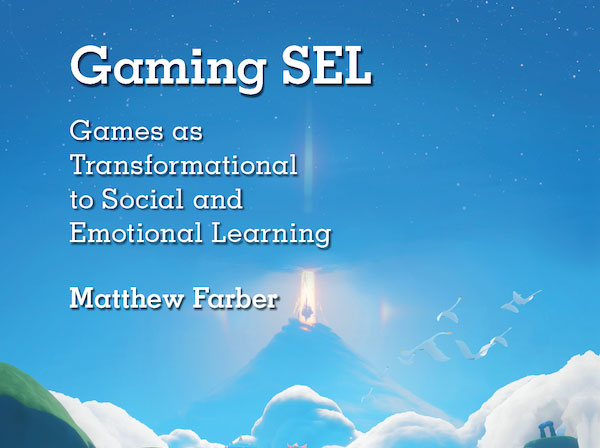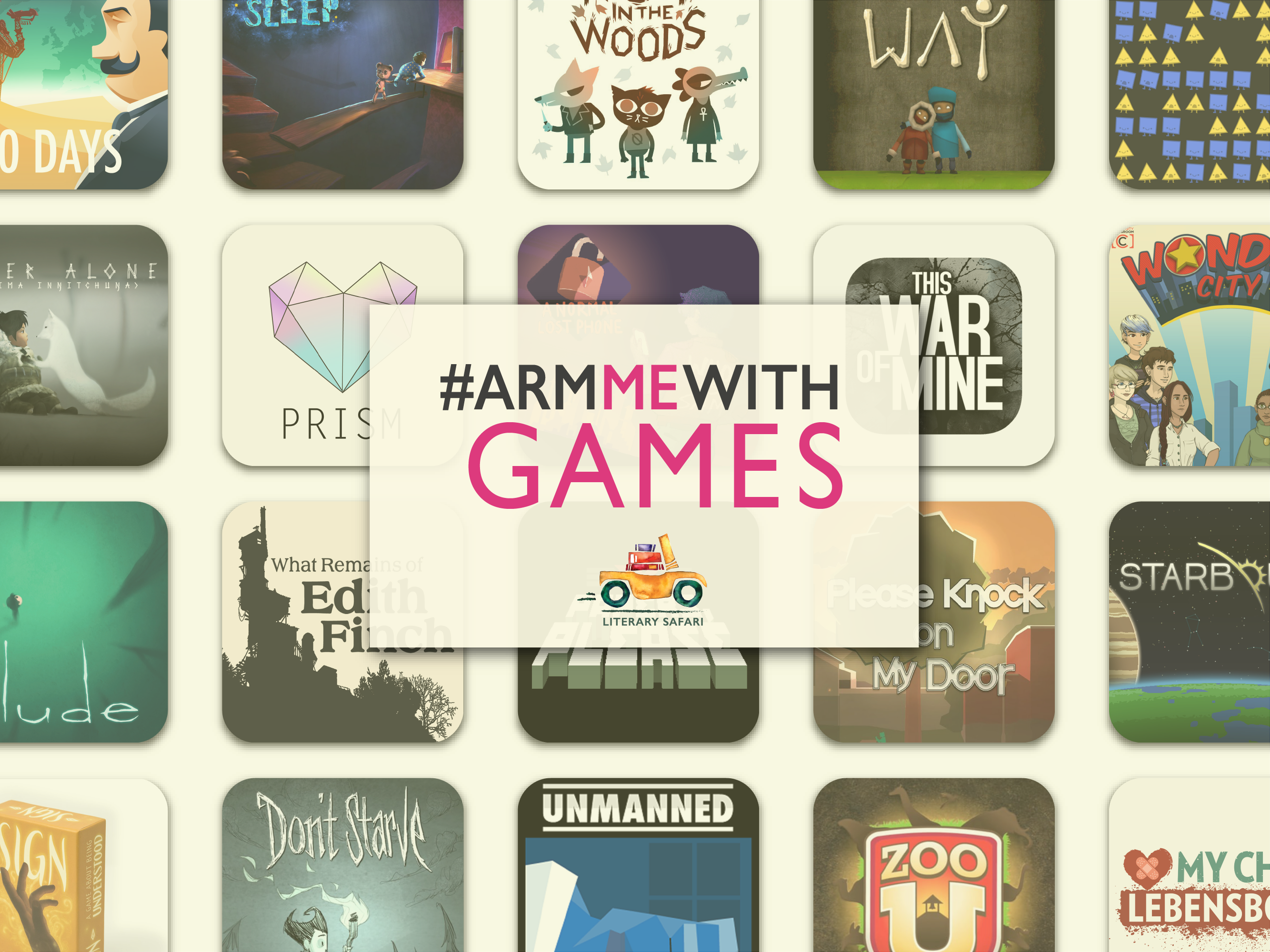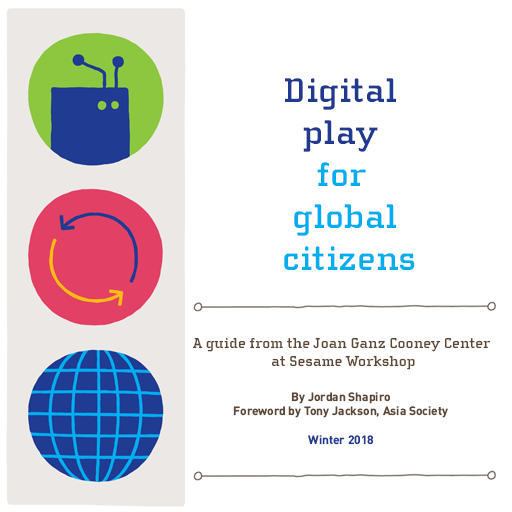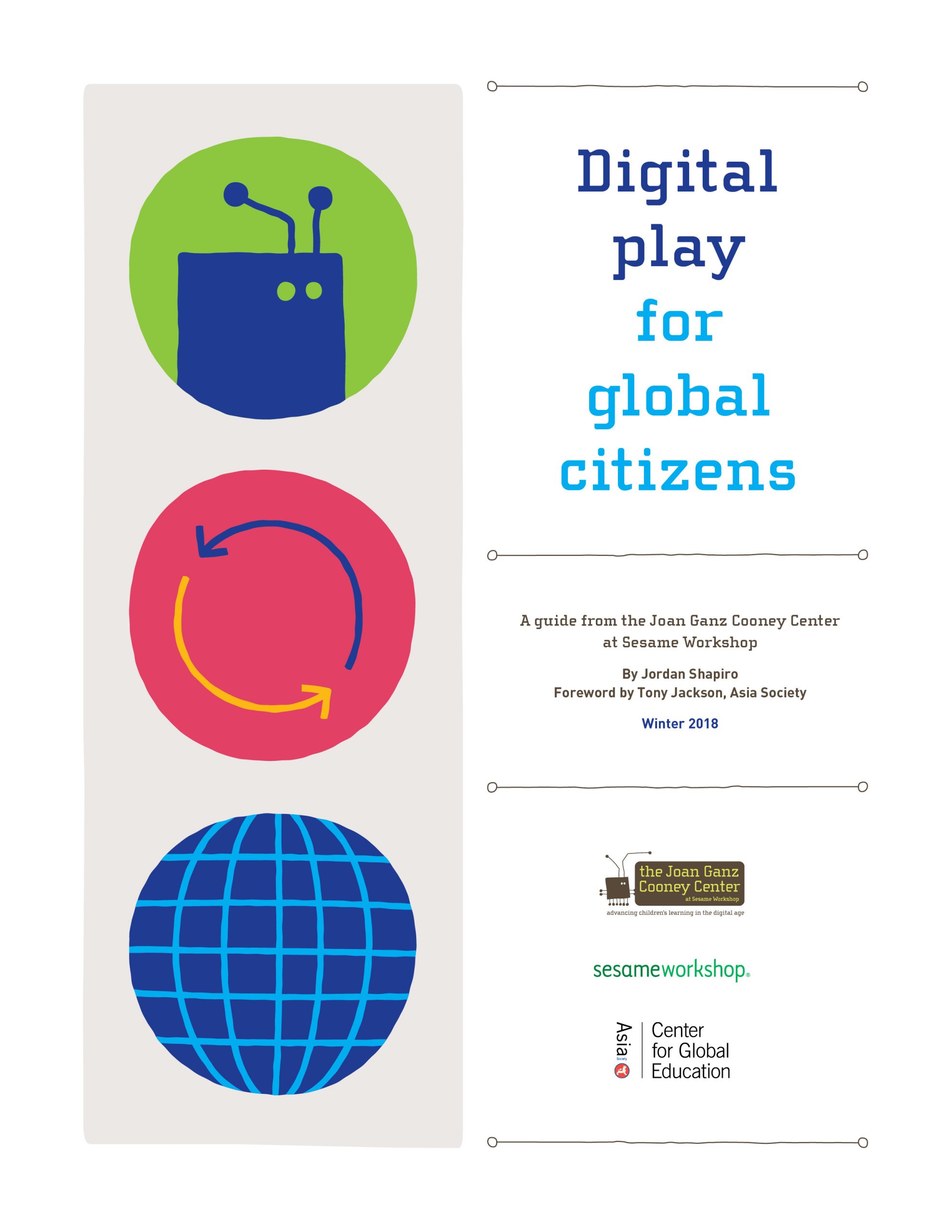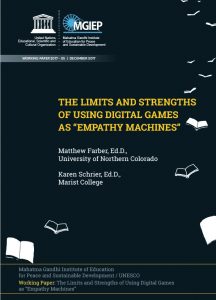
How do we live together in a connected world? How do we cultivate “global citizens” who can relate to others—across international borders and Internet forums, or political aisles and bus aisles?
These are increasingly pressing questions, and ones that are considered by two recent publications:
- The Joan Ganz Cooney Center’s Digital Play for Global Citizens, by Dr. Jordan Shapiro
- UNESCO’s Mahatma Gandhi Institute of Education for Peace and Sustainable Development (MGIEP)’s “The Limits and Strengths of Using Digital Games as ‘Empathy Machines,’” by Dr. Matthew Farber and Dr. Karen Schrier
One essential skill for navigating our connected world is how we communicate with others. Both papers emphasize the need to foster empathy and other socio-emotional (SEL) skills, such as perspective-taking and negotiating differences. These skills help us connect with people and foster mutual understanding because they enable us to listen to others’ point of view, even if we do not agree with them.
How can play support this? It may be surprising that play can help people learn and connect, but it is supported by research, such as by Dr. Mimi Ito and the Connected Learning Research Network; my own works Knowledge Games and Learning, Education & Games; Matthew Farber’s latest book, Game-Based Learning in Action; and earlier works by Jean Piaget, Lev Vygotsky, and Seymour Papert. Recently, Dr. Sinem Siyahhan and Dr. Elisabeth Gee came out with a book, Families at Play, as part of the MacArthur Foundation Series on Digital Media and Learning, which delves into how games support family connectedness.
Shapiro’s Digital Play for Global Citizens notes a number of playful platforms that can help kids connect with their peers around the world and cultivate understanding for each others’ customs. For instance, Empatico.org connects kids in different classrooms, allowing real-time collaboration on specific activities. In the activity, “Helping Hands,” kids discuss how they help their communities, and in “Ways We Play,” kids compare how they play.
One reason cultural awareness activities may help foster empathy is because it enhances our openness to others’ perspectives. As we write about in our white paper, perspective-taking is the “act of taking on another’s views such that we can better understand them.” In Paul Darvasi’s UNESCO white paper on empathy, he explains that, “Part of the process of perspective-taking involves openness—we need to first value other perspectives such that we can embrace them and consider them more fully.” In other words, we need to care about and value others’ perspectives to be able to empathize with them.

There is also something about taking a journey together—even if it is a virtual journey—that helps people understand, care about, and connect with each other. Both papers mention Way, a unique and imaginative game made by CoCo & Co., developers who (at the time) were students at Carnegie Mellon’s Entertainment Technology Center (ETC) program. Way is a two-person game, where both players (who are anonymous strangers) play together using only nonverbal communication. The players are separated by a split screen and must work together to overcome obstacles that they can only do with the help of the other person. At the very end, once the players win the 20-minute game together, they are finally in the same screen and can write messages to each other atop a map of the world.
When investigating Way, I discovered that the two initially anonymous players would often become “friends” by the end of the game. They would scrawl “hi” and “hello friend” on the map and start conversations. They would circle where they were from—often across the globe—and share their perspectives. Perhaps there is something about play that helps us form friendships and empathize with another—and there’s something about empathy that helps us form friendships through play.
In a new, as yet unpublished study on Way, I observed 30 participants playing the game with an unidentified, anonymous partner (who, in this particular study, was always the same researcher). I found that all of the participants rated their game partner high on trustworthiness, and all but one rated the partner high on helpfulness and cooperativeness. About two-thirds of the study participants felt that they had already started developing a friendship with their partner, even though they had only spent 20 minutes playing with them online in a digital world.
Similarly, in my study of Fable III, participants considered even a virtual character their “friend” after playing the game with them for many hours. All but one of the twenty participants I observed playing Fable III chose not to sacrifice their mentor “Walter,” a virtual character in the game, despite the game forcing the player to leave him behind.
So here’s to digital play helping us form friendships and care about others—across our world, and even across virtual worlds, too!
 Dr. Karen Schrier is Associate Professor and Director of the Games & Emerging Media program at Marist College. Prior to Marist College, she spent over a decade producing websites, apps, and games at places like Scholastic, Nickelodeon, and BrainPOP. She is the editor of the book series, Learning, Education & Games, published by ETC Press (Carnegie Mellon), and co-editor of two books on games and ethics. Her latest book, Knowledge Games: How Playing Games Can Help Solve Problems, Create Insight, and Make Change, was published by Johns Hopkins University Press, and has been covered by Forbes, New Scientist, and Times Higher Education. She holds a doctorate from Columbia University, master’s degree from MIT, and a bachelor’s degree from Amherst College.
Dr. Karen Schrier is Associate Professor and Director of the Games & Emerging Media program at Marist College. Prior to Marist College, she spent over a decade producing websites, apps, and games at places like Scholastic, Nickelodeon, and BrainPOP. She is the editor of the book series, Learning, Education & Games, published by ETC Press (Carnegie Mellon), and co-editor of two books on games and ethics. Her latest book, Knowledge Games: How Playing Games Can Help Solve Problems, Create Insight, and Make Change, was published by Johns Hopkins University Press, and has been covered by Forbes, New Scientist, and Times Higher Education. She holds a doctorate from Columbia University, master’s degree from MIT, and a bachelor’s degree from Amherst College.
